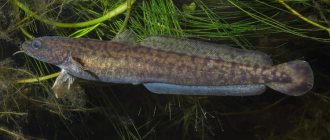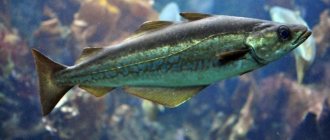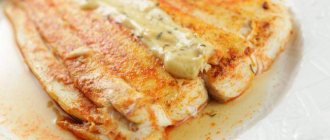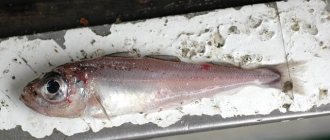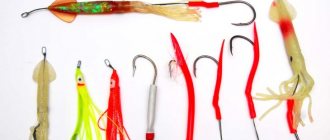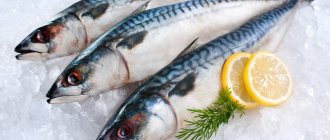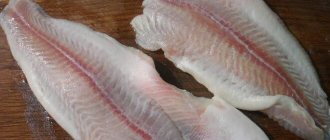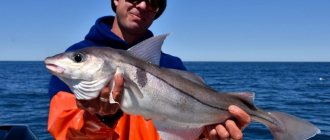Cod is a whole genus of fish, which includes several hundred different species. Most often, these fish live in the waters of the Northern Hemisphere. Most species of cod fish are objects of commercial hunting. The most common representatives of the family are: haddock, pollock, navaga and cod. More exotic species include moth, gadikula and meneca. Fish of the cod family played a significant role in human history, as they were the food of the Vikings, sailors and pioneers of the shores of the New World.
It is noteworthy that the ancient cod fish in the Stone Age were much larger than their current representatives. This discovery was made by paleontologists who studied the fossils of fish of this family.
Marine and freshwater cod fish
Literally all representatives of the cod fish family are marine saltwater fish. They can live in waters of varying degrees of salinity. However, there is still one freshwater representative. This fish is called burbot, as well as lake and river cod. Burbot has perfectly adapted to living in freshwater reservoirs and rivers. It is found most often in rivers and lakes of Europe, America and Asia. In Siberia, this fish is caught on a very large scale.
Men (Burbot)
What spices and seasonings go well with cod?
Almost all known spices are suitable for cod, as well as for other fish. It does not matter how the fish is cooked: in the oven, in a frying pan or on the grill. Spices in this case are universal.
Most often, cod is prepared by adding:
- salt;
- black pepper;
- allspice;
- Bay leaf;
- saffron;
- cumin;
- coriander;
- basil;
- star anise;
- rosemary;
- fennel;
- ginger;
- curry;
- marjoram;
- paprika;
- thyme.

Characteristics and signs of cod
Cod fish have a number of common features, which is why they became representatives of the same family. These features include:
- The presence of a large disproportionate head;
- Large and expressive eyes;
- The presence of a light stripe that surrounds the body of the fish;
- Absence of spiny rays in the fins;
- Large openings for gills;
- Small scales covering the body.
There is another feature that is not consistent with all species, and that is the presence of a fleshy barbel in the lower jaw. Some fish of the cod family are covered with various spots.
The lifestyle of cod corresponds to its distribution area. Pacific cod are largely sedentary, but can migrate very short distances. They spend the period of extreme cold at a depth of up to 55 meters. In summer they swim back closer to the coast.
Atlantic cod lives along sea currents, so it can migrate for quite a long time. Some schools of fish can organize swims from spawning grounds to fattening over a distance of up to 1.5 thousand kilometers.
How to store?
Newly purchased cod that cannot be cooked immediately must be stored in accordance with all rules.
Conditions
Purchased cod should be stored in the refrigerator. It is better to place fresh fish in a bowl and cover with a lid, but packaged fish can be left in vacuum packaging.
For longer storage, the cod is sent to the freezer. But it is important to remember that you cannot freeze and thaw it more than once.

Term
A whole cod or a cut carcass can be stored in the refrigerator for up to 2-3 days. But in the freezer this period is extended to 7-10 months.
Cod nutrition
Representatives of the cod family are predatory fish. As a rule, fish up to three years old feed on various crustaceans and plankton. Then they move on to small fish, such as capelin, herring, sprat and saury. Cod fish are characterized by the phenomenon of cannibalism, when fish eat each other. The inhabitants of the Pacific Ocean feed on navaga, mollusks and worms. Fish can also eat small invertebrates that live on the seabed.
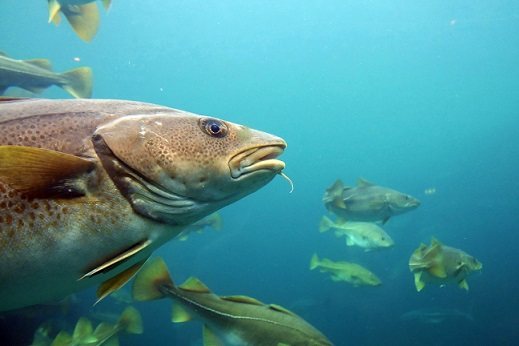
Weight loss and diet
Cod is rightly called the ideal fish for weight loss. It does not contain many calories (about 70 per 100 g), but the protein level is very high. All this makes cod a popular diet product. It is baked, stewed, steamed and grilled, boiled and added to all sorts of dietary recipes.
In addition to its known beneficial properties, this fish is nutritious. It eliminates the feeling of hunger for a long time, filling the body with energy and saturating it with all the necessary substances.

Breeding period and lifespan
Cod become sexually mature at 9 years of age. However, pollocks are ready to have offspring at 3-4 years. The fish spend this period in the spawning grounds. Females begin spawning at depths of up to 100 meters. As a rule, this lasts for several weeks, since the females lay eggs in batches. The male spends this time with the female, fertilizing the laid eggs. One female is capable of laying up to 6 million eggs. In Pacific cod, eggs settle on bottom plants, while in Atlantic cod, they are carried northward by the current.
The average life expectancy is 25 years.
What side dishes should I serve with?
Cod should be served with plenty of side dishes that will help bring out the flavor of the fish. Cod cooked in the oven will go well with potatoes baked along with the main dish. Vegetables and cereals are served with fried cod.
A varied assortment of vegetable crops allows you to choose a side dish for fish prepared according to any recipe. An excellent flavor combination is obtained by combining cod with beets, carrots, onions, lettuce, cabbage, sweet peppers, tomatoes, eggplant, zucchini, green peas and spinach.
In addition to vegetables, you can serve fish with pasta or porridge, for example, rice, buckwheat, barley or pearl barley.

Useful properties of cod fish
Benefits of cod liver
Cod liver is the subject of controversy among many doctors and nutritionists. One part of people defines it as an offal, and the other – as a delicacy dish. However, the benefits of cod are undeniable, since healthy fish oil is prepared from it. The product itself has a fairly high nutritional value, and if properly preserved it will delight you with its unsurpassed taste.

The benefits of cod liver are also due to the fact that it does not undergo heat treatment at any stage of production. It arrives on the shelves in its raw form, so it does not lose any beneficial properties. The most important and beneficial element of cod liver is Omega 3, which plays an integral role in the normal functioning of the body.
Benefits of cod caviar
The beneficial properties of cod caviar were discovered in ancient times. The quality of cod caviar is in no way inferior to the expensive versions of red and black sturgeon caviar. It is actively used in cooking to prepare tasty and healthy dishes.
The most unique component in cod caviar is the Omega 3 group of amino acids. In addition, the fish contains natural antioxidants, the regular use of which has a positive effect on the health of teeth, skin and hair, and also strengthens the immune system and nervous system.
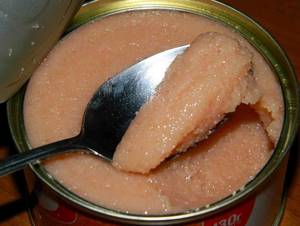
There are a wide variety of cod caviar options on store shelves, which are affordable and contain all the necessary vitamins and minerals.
How to prepare?
Preliminary preparation of cod consists of cleaning it from scales and cutting it into fillets or portioned pieces.
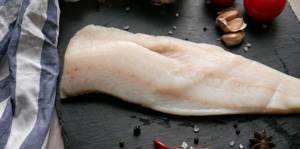
How to clean?
Cod must be cleaned before cooking. It’s easy to do this at home: the fish’s scales are small and do not fit tightly to the body. You can easily separate the scales with a regular tablespoon or knife, moving against the scales in the direction from head to tail.
How to cut into boneless fillets?
The last step in preparing the fish is cutting it. To properly cut cod, you need:
- Place the fish on its side, cut off the tail and all fins.
- Make a deep incision along the ridge, reaching the spine as far as possible.
- Moving parallel to the table, cut the meat from the spine along the entire length of the body.
- Turn the fish over to the other side and repeat the previous step.
- Cut off the rib bones of 2 cod fillets.
- If desired, the skin can be removed. To do this, lay the fish meat side down, pry the skin with a knife and pull it in the opposite direction, carefully removing it from the entire fillet.
How to defrost?
Frozen fish must be thawed before cooking. This cannot be done at room temperature. The optimal temperature for this process is considered to be -3…-5 °C. Therefore, the cod fillets are placed in a deep bowl, covered with a lid and placed on the bottom shelf of the refrigerator.
There is another way to quickly defrost cod. Since it is wrong to simply leave the fish in the kitchen and wait for it to melt, you can use the microwave. This kitchen device usually has a standard “Defrost” mode, which will do the job perfectly.
To defrost fish, separate fillet pieces from each other, place in a deep plate and place in a microwave oven for 3-5 minutes. After this the fish is taken out. If it is defrosted unevenly, the pieces of cod are turned over and put back in the microwave for the specified time.
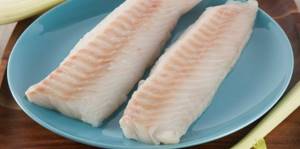
How to marinate?
To prepare aromatic fish with a spicy taste, the cod should first be marinated.
For baking
Mustard sauce is considered the best marinade for baking in the oven. It is prepared like this:
- 3 tsp. Dijon mustard mixed with 1.5 tbsp. l. Sahara;
- add 4 tbsp to the mustard and sugar mixture. l. olive oil and 1.5 tbsp. l. white wine vinegar;
- All ingredients are thoroughly mixed, and then the sauce is poured over the cod (steaks or whole) for 30-59 minutes.
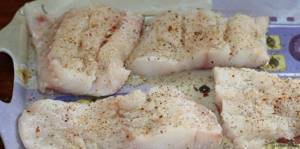
For frying
Usually fish is fried without prior marinating. But it has long been known that pickled cod after frying will have a juicier taste. For marinade, kefir, a weak solution of vinegar or cucumber brine are often used:
- pieces of cod are placed in a thick plastic bag;
- pour any of the above products inside;
- leave for 60 minutes in the refrigerator;
- drain the marinade, dry the fish and start cooking.
For grilling
Here's how to marinate cod for grilling: Mix a clove of crushed garlic, the juice of 1 lemon, a little salt and pepper in a deep bowl. Dip the fish into this bowl for 15-20 minutes, after which they begin to grill it.

Conditions and places of stay
Specimens of this genus are very demanding of certain living conditions:
- water temperature;
- season;
- water salinity;
- vertical arrangement of the living area;
- spawning.
Despite the fact that cod is considered a bottom dweller, it does not go to the open sea to great depths, preferring to stay in the coastal zone. The optimal water temperature is 1-10 degrees Celsius. Lower temperatures cause discomfort, forcing the fish to rise to the upper layers of the water. A rise in temperature forces them to go to a deeper bottom or hide in the rocks.

Depending on the time of year, seasonal migrations occur: in winter - to the southwest against the current, in summer - to the northeast along the current. This is due to currents in the seas and oceans.
Depending on the type of cod, there are certain indicators of water salinity. For example, the optimal indicator for Pacific cod would be a salinity of 33-35%.
Codfish (Gadiformes)
The order Gadiformes includes about 700 species (of which over 500 are more or less deep-sea), mainly marine fish, characterized by a significant reduction in skeletal elements. They are found primarily in cold to cool waters. A few small species are pelagic, feeding on zooplankton; the vast majority of species lead a benthic lifestyle, eating various invertebrates and small fish. Many species lead a gregarious lifestyle. Sizes from 10-30 cm to 1-1.5 m.
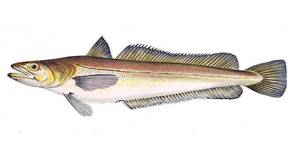
European hake (Merluccius merluccius)
The scales are cycloid, sometimes reduced. The pelvic fins are located in front of the pectoral fins. There are no spines in the fins. The swim bladder is closed. There are no intermuscular bones. There are upper ribs. The olfactory nerves are not located in the orbital cavity adjacent to the interorbital septum (as is usual in most Teleostei), but are placed in a canal that lies above the interorbital septum and communicates with the cranial cavity. Olfactory lobes in close proximity to the nasal capsules; thus the brain continues far ahead. One of the morphological features of cod fish is the structure of their unpaired fins. Among them there are species with one, two and three dorsal and one and two anal fins. A characteristic biological feature of the representatives of the order should be considered their ability to live in different parts of the aquatic environment and unequal adaptability to movement. The vast majority stay near the bottom, but among the representatives of the family there are also those that live in the water column, leading a pelagic lifestyle (Micromesistius).
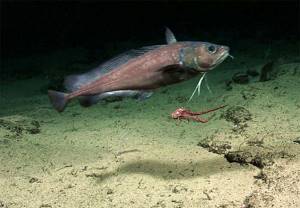
Antimora (Antimora sp.)
Among the representatives of the family, along with species that live at considerable depths (Brosme), there are species that also live at shallow depths off the coast. Staying near the coast, some representatives lead an extremely motionless lifestyle (Raniceps), while others, such as navaga (Eleginus), are much more mobile. Along with species that live locally, among cod there are also those that make distant migrations - cod (Gadus morhua morhua) and haddock (Melanogrammus aeglefinus), which leave the coast of Norway in the summer almost to the shores of Novaya Zemlya, making a long journey in a short time at 1500-2000 km. Cod migrations are closely related to feeding and reproduction and are largely dependent on sea currents and seasonal temperature changes.
During spawning, sexually mature codfish gather in fairly constant places, where each species spawns at specific times. The main spawning time for cod is the second half of winter and the beginning of spring; for a few, spawning occurs in the summer, while for many species it can occur on a small scale almost all year round. Fertility is extremely high: large Molva molva has up to 60 million eggs, Gadus morhua 4-6, and sometimes up to 9 million eggs. The number of eggs depends on the size of the fish: large cod fish have a larger number of eggs, small ones have much less; navaga, for example, has only from 6 to 90 thousand eggs.
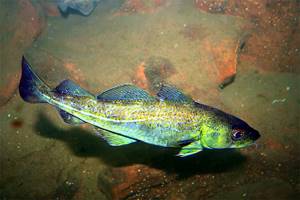
Atlantic cod (Gadus morhua)
The eggs, larvae and fry of almost all cod lead a pelagic lifestyle, with the fry of many species hiding under the bell of jellyfish (Cyanea), and the fry, already leading a benthic lifestyle, hiding between the valves of mollusks. The incubation period lasts from a week to a month, in arctic species it is significantly longer than in boreal species. During the development of eggs into fry, several stages are distinguished: 1) eggs, 2) larvae, characterized by the presence of a yolk sac, 3) unformed fry, lasting from the moment of complete resorption of the yolk sac until the appearance of rays in the unpaired fins, 4) formed fry, having rays in the unpaired fins fins, but without scaly cover and 5) juveniles or fingerlings - fully formed fish with scaly cover.
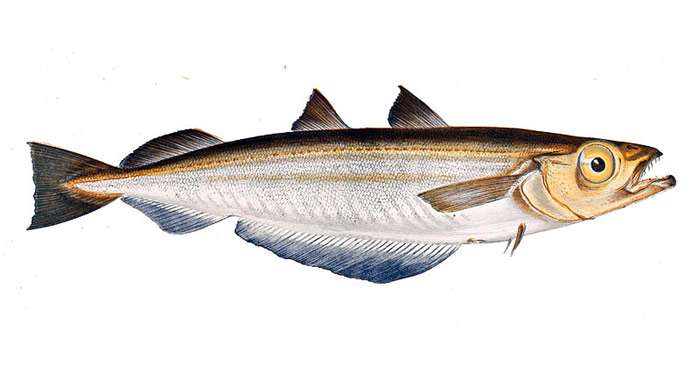
Northern whiting (Micromesistius poutassou)
During the pelagic period of life, eggs, larvae and fry are carried by currents from spawning sites, sometimes over long distances. In cod that spawn off the Lofoten Islands, the fry towards the end of the pelagic stage are carried by the North Atlantic Current from their spawning grounds hundreds of kilometers along and away from the coast. The caviar and fry of cod, which spawn off the southern and western coasts of Iceland, are carried by the circular current circulating here to the northern shores of the island. Thus, even at the stages of eggs, larvae and fry, cod disperse from the spawning grounds.
The juveniles of almost all cod species spend the first years of their lives off the coast at shallow depths. During the first few years of benthic life, juveniles make only limited migrations, influenced by seasonal temperature changes and in search of food. As the juveniles grow, migrations lengthen, and by the time they reach sexual maturity, their length takes on normal dimensions for this species.
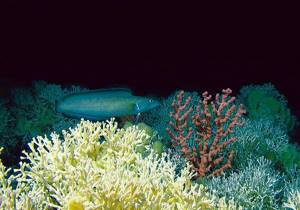
Menek, or men (Brosme brosme)
The time of onset of sexual maturity , just like growth, varies among different cod species. The smallest species reach sexual maturity most quickly - Eleginus navaga, Boreogadus saida, which begin to spawn upon reaching 2-4 years. Large cod species - Melanogrammus aeglefinus, Gadus morhua - grow much faster, but reach sexual maturity at a later age. Melanogrammus aeglefinus begins to spawn for the first time at the age of 4-5 years, various races of Gadus morhua - at the age of 4 to 15 years.
Juvenile cod feed on small invertebrates. The food of adult cod is extremely varied. The smallest species feed on small planktonic and benthonic crustaceans, and less often on juvenile fish. Large cod species feed on echinoderms, mollusks, large crustaceans and fish. The main food of some species is fish.
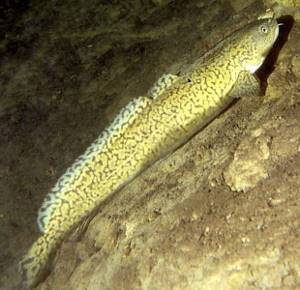
Burbot (Lota lota)
Many of the cod suborder are of great commercial importance . Cod are prized for their meat and large, fatty liver. One of the main commercial species is cod Gadus morhua, living in the temperate and northern regions of the Atlantic and Pacific oceans. Among the by-products of the cod fishery, we should first of all mention the fat rendered from the liver, which, due to its high content of vitamins, is widely used in medicine. Cod heads are used to make fishmeal. Large fish are skinned and skinned.
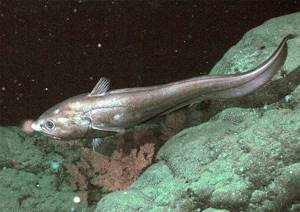
Armed grenadier (Coryphaenoides armatus)
Among other marine codfish of great commercial importance, we would like to mention haddock - M. aeglefinus (Atlantic), pollock - Theragra chalcogramma (North Pacific), hake and hake (several species of Merluccius, common in temperate and subtropical waters of the northern and southern hemispheres). Far Eastern navaga (Eleginus gracilis) is caught in the coastal waters of the Pacific Ocean; spawns in winter. A closely related species lives in the coastal waters of the North Atlantic (including the White Sea). In the cold rivers and lakes of the northern hemisphere, the burbot lives - Lota lota, reaching a length of 1 m and a weight of 30-35 kg. It feeds especially intensively in winter, eating fish and various bottom invertebrates. At the age of three years it becomes sexually mature. Spawning in December-January, fertility from 30 thousand to 5 million eggs, from which the larvae hatch after 1.5-2.5 months.
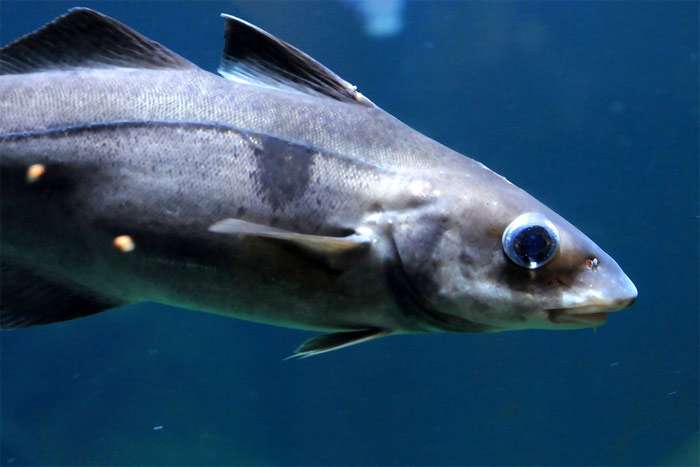
Haddock (Melanogrammus aeglefinus)
There are 10-11 known families containing about 700 species, of which a representative of one family is found in fresh waters. Numerous remains in the form of otoliths, assigned to many genera of the family Gadidae, are found in all Tertiary deposits of almost all European countries, since the Upper Paleocene. Representatives of the family Bregmacerotidae (genus Bregmaceros) were found in Eocene deposits. The family Moridae is known in fossil form only from otoliths from Oligocene deposits of New Zealand.
Taxonomy of the order Cod-like fish:
- Family: Bregmacerotidae Gill = Bregmaceraceae
- Family: Euclichthyidae Cohen = Euclichthyidae
- Family: Gadidae Rafinesque, 1810 = Cod Subfamily: Gadinae = Cod-like
- Subfamily: Gaidropsarinae =
- Subfamily: Lotinae Bonaparte, 1832 = Burbot
- Subfamily: Phycinae = Burbot
- Subfamily: Ranicipitinae =
- Subfamily: Bathygadinae =
- Genus: Macruronus Günther, 1873 = Macruronus
- Genus: Antimora Günther, 1878 = Antimora
Literature: 1. N. P. Naumov, N. N. Kartashev. Zoology of vertebrates. Lower chordates, jawless fish, amphibians. Moscow “Higher School”, 1979 2. A. N. Svetovidov. Fish. Volume IX, no. 4. Codfish. Publishing house of the USSR Academy of Sciences. Moscow, 1948
Habitats
In the Pacific Ocean, cod is found in small quantities, from the Bering Strait to California. There is much more of it in the Atlantic Ocean. In the east of the Atlantic it lives everywhere from the Bay of Biscay to the Barents Sea, in the west - from Greenland to North Carolina. In the Arctic Ocean it is found throughout the entire water area.
In Russia, cod can be found in the White, Barents and Kara Seas. The fish is schooling, moves in large schools, lives mainly in the bottom layers, although in the absolute sense it is not a bottom fish. Its favorite depths are up to 100 m, so its habitat includes either not very deep seas (including desalinated ones), such as the Baltic, or coastal zones and the continental shelf.
Most representatives of this genus prefer salty water, although some - White Sea, Baltic, Kildim - have adapted to water of very moderate salinity.
Varieties
There are the following types of cod:
- Atlantic;
- Pacific cod;
- Greenland cod;
- pollock.
The marine fish of the cod family is classified into a separate genus - Arctic cod, consisting of subspecies of ice and East Siberian cod. In turn, within the species of Atlantic cod, scientists distinguish such subspecies as Baltic cod, White Sea cod and Kildin cod. There is debate about the classification of the White Sea - from the point of view of Western ichthyologists, this is the same as representatives of the Greenland breed.
Cod fish species differ in size, lifespan, habitat and some other parameters. The largest representative of the genus is the Atlantic one, living off the coasts of Europe and America. The southern border of the range is the Bay of Biscay and the state of South Carolina, respectively, the northern border is the Barents Sea and Greenland. Reaches a maximum weight of 90 kg.
Its subspecies live in Russia, in particular Kildin and Baltic cod. An interesting subspecies is the Kildinskaya - endemic to Lake Mogilnoe on Kildin Island (Murmansk region). It has been there since the lake was cut off from the sea by a stone rampart (about a thousand years ago). During this time, the cod shredded - its maximum is 60 cm in length - and acquired a brighter color. Its eggs turned from bottom to pelagic, because the bottom layer of Lake Mogilnoye is poisoned with hydrogen sulfide. We can say that in a sense this is a river fish, since the upper 5 m of water in Lake Mogilnoye is fresh. Only the middle layer is salty.
Pacific cod, also known as Far Eastern cod, is also part of Russia’s natural fisheries resources. It is found in the coastal waters of the Bering, Okhotsk and Japan seas. It differs from its Atlantic counterpart by a larger head combined with smaller body proportions, as well as the anatomical features of the swim bladder. The average length is about 50 cm, maximum 90.
Greenland cod is one of the smallest and shortest-lived species. The maximum length is 85 cm; on average, the fish in the catch will be within 35-40 cm. It lives off the coast of Greenland.
Recently, the well-known pollock, which was classified as a separate species of cod, was officially classified as cod fish. This fish, similar to cod, lives in a range from the Sea of Japan to the coast of Alaska. It has a narrow torpedo-shaped body, the color of the back varies from yellowish to black. It has the lowest nutritional value.
Two species of northern cod - ice and East Siberian - are classified as a separate genus. These are the smallest species, the length of their representatives does not exceed half a meter, and their weight does not exceed 1.5 kg.

